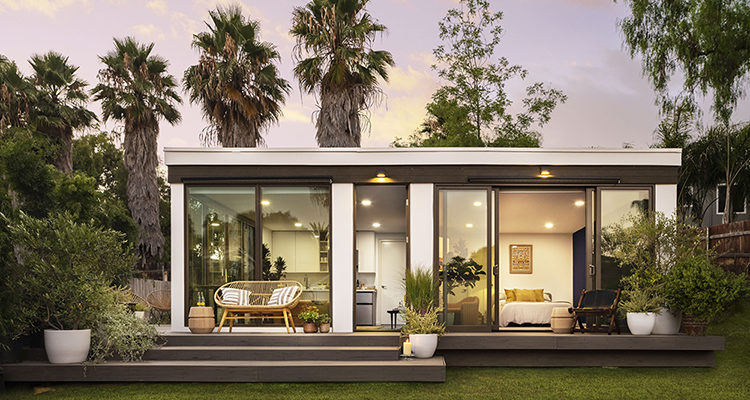The buildings’ walls, supported by a steel frame, consist of two panels, between eight and 14 millimeters thick, which are separated by a six-inch cavity filled with a high R-value foam insulation. Exterior walls currently feature traditional building cladding, but Mighty Buildings expects its Light Stone material will achieve a minimum one-hour fire rating, which means it could serve as the ADU’s exterior walls.
The company plans to introduce a fiber-reinforced material sometime in 2021; the addition of the fibers into the printed material will be automated. “With the new fiber reinforcement, it’s going to allow us to eliminate any need for steel because the performance of the reinforced material is actually better than reinforced concrete walls, with four times less weight and four times more insulation,” says Ruben.
This stronger material will enable Mighty Buildings to introduce a 3D-printed panel system that will provide greater flexibility in home design, including the construction of additional stories to the basic buildings. The company has developed a plug-in for Autodesk® Revit building information modeling software that allows home designers to create custom floor plans. Mighty Buildings can then convert those plans into panels, 3D print them and ship them to a building site for assembly.
Mighty Buildings’ simulation capabilities should drastically reduce the cost of introducing new building designs because they allow for multiple virtual builds before the structures are printed. “We identify a lot of potential issues up front, which also means that we’re going to be able to speed that new product introduction time by as much as five times,” says Ruben. The technology can be used by developers that cater to every market, including high-end, middle market and affordable housing.
3D printing is a more sustainable way to build homes, Ruben says. Traditional building generates about two kilograms of waste per square foot, while the 3D process generates just 0.02 kilograms, which can be recycled into new material as filler. In addition, 3D-printing homes could help solve the building industry’s chronic worker shortage. Although Mighty Buildings’ technology reduces the number of skilled workers required to produce a home, it also creates technology-related jobs that are less physically challenging.
As of November 2020, the company had installed four of its ADU structures in California, had three completed on its factory floor awaiting installation permits and another 14 in process. The company plans to expand its factory to six production lines by the end of 2021 and to open factories in other locations starting around 2022.
“We’re looking at being able to set up a factory for less than $10 million in three to six months, and out of that to be able to generate 600 to 1,000 units a year, depending on the design,” Ruben says. In addition, Mighty Buildings has signed agreements to work with companies throughout the world; one U.S. developer has expressed interest in building 10,000 units a year once the technology can produce them at that scale.



